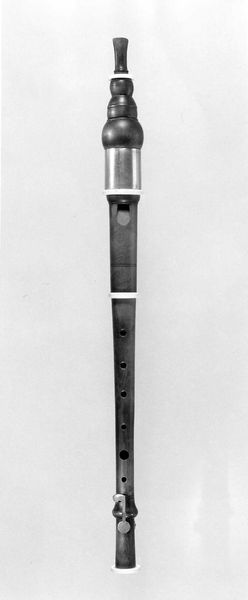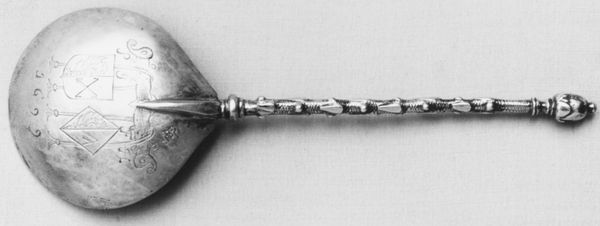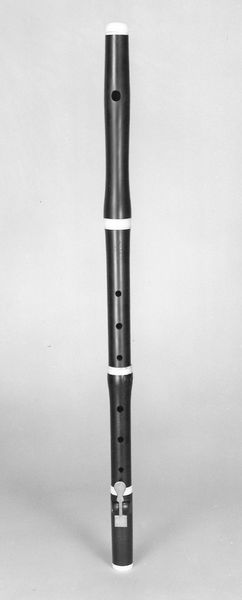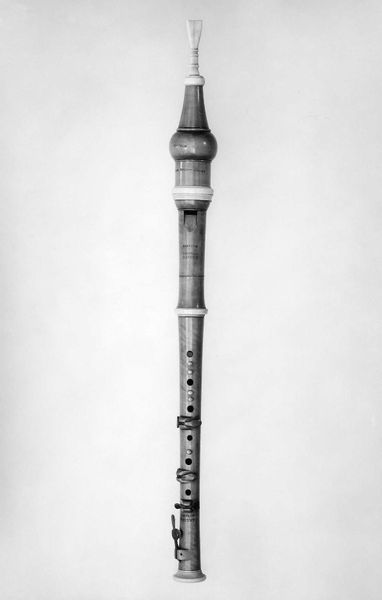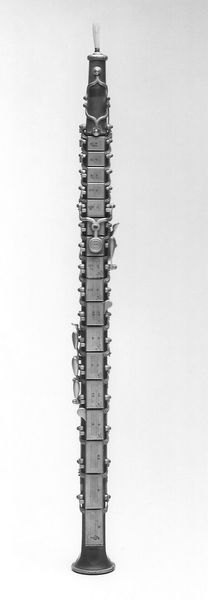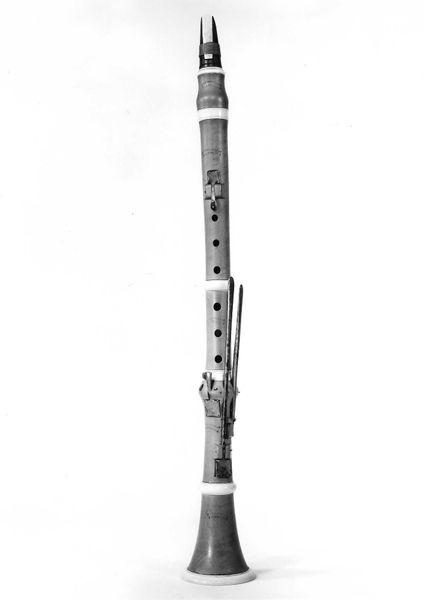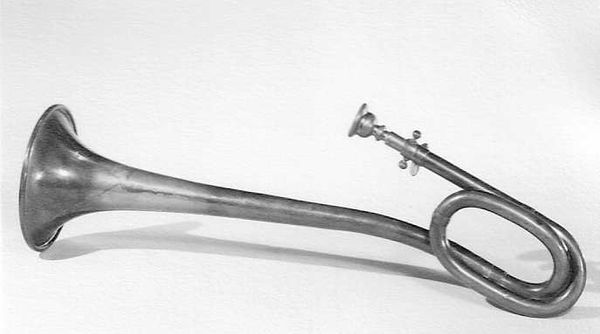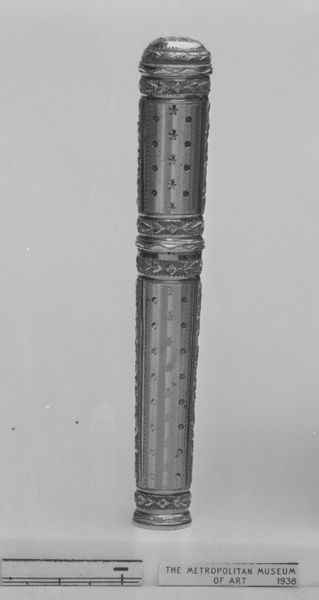
metal, wood
#
metal
#
wood
Dimensions: L. w/o cap 30.5 cm ( 12 in.)
Copyright: Public Domain
This is a piccolo made of ivory by Theodore Berteling, a maker active in New York in the mid-19th century. The choice of ivory for this instrument speaks to its intended audience: the upper classes. Ivory, a precious material obtained through colonial exploitation, transformed an object of utility into a symbol of status and wealth. In the 19th century, women's roles in society were largely confined to the domestic sphere, but they were encouraged to cultivate accomplishments such as music. The piccolo, with its delicate size and bright tone, became a fashionable instrument for women of means, allowing them to perform music and display their refined tastes. As you look at this piccolo, consider the complex interplay of gender, class, and colonialism that shaped its creation and use. It serves as a reminder of how objects can embody the social and cultural values of their time, reflecting both artistic expression and societal power dynamics.
Comments
No comments
Be the first to comment and join the conversation on the ultimate creative platform.

